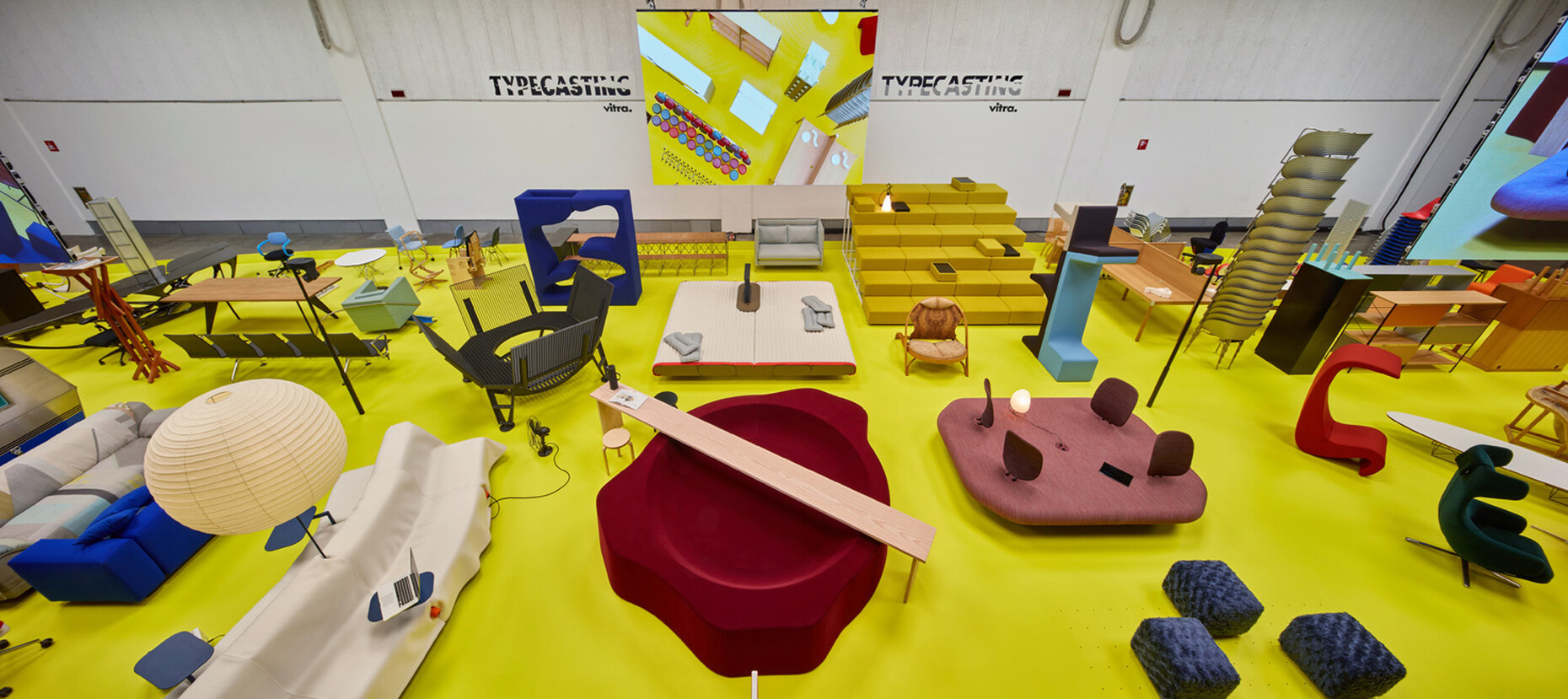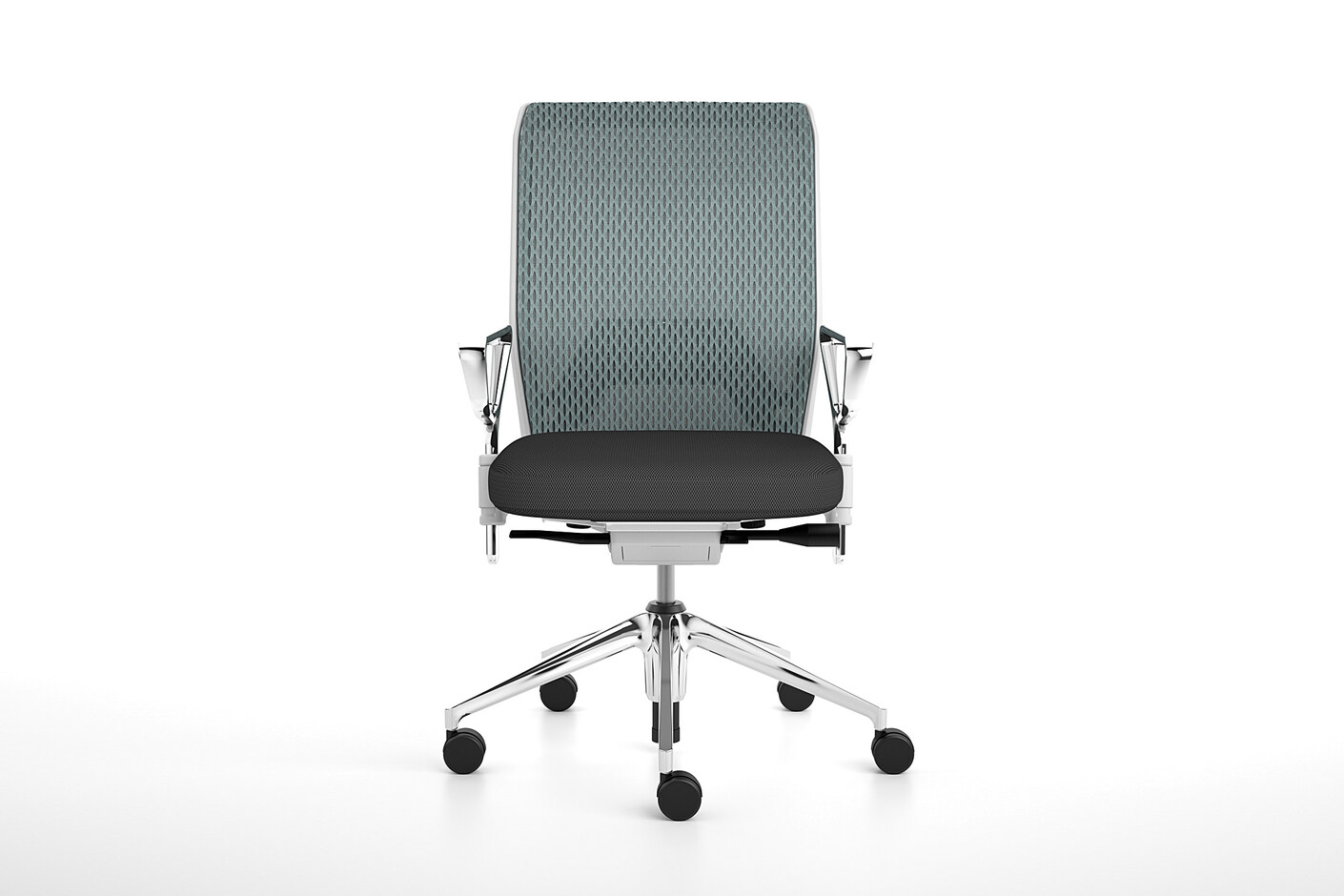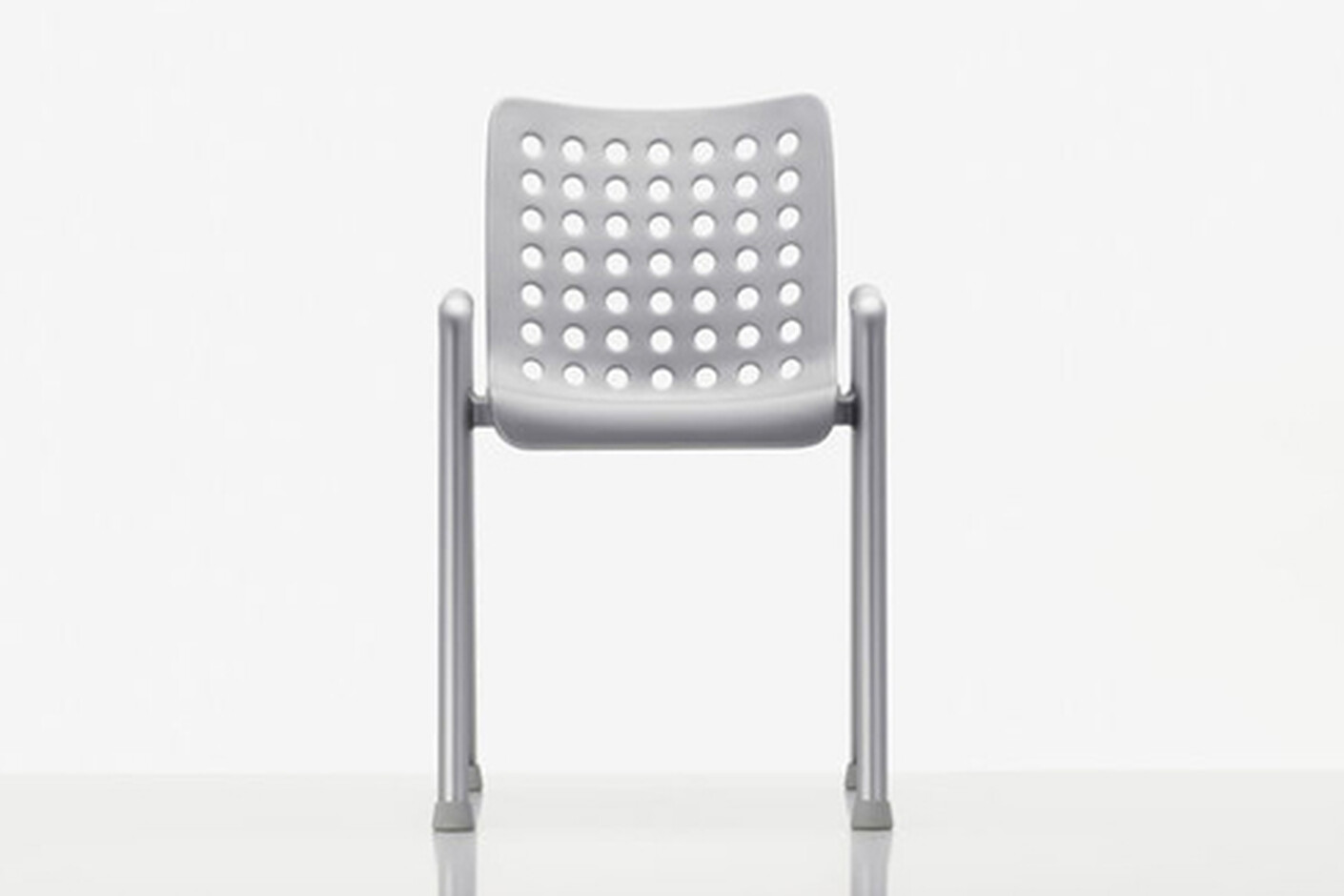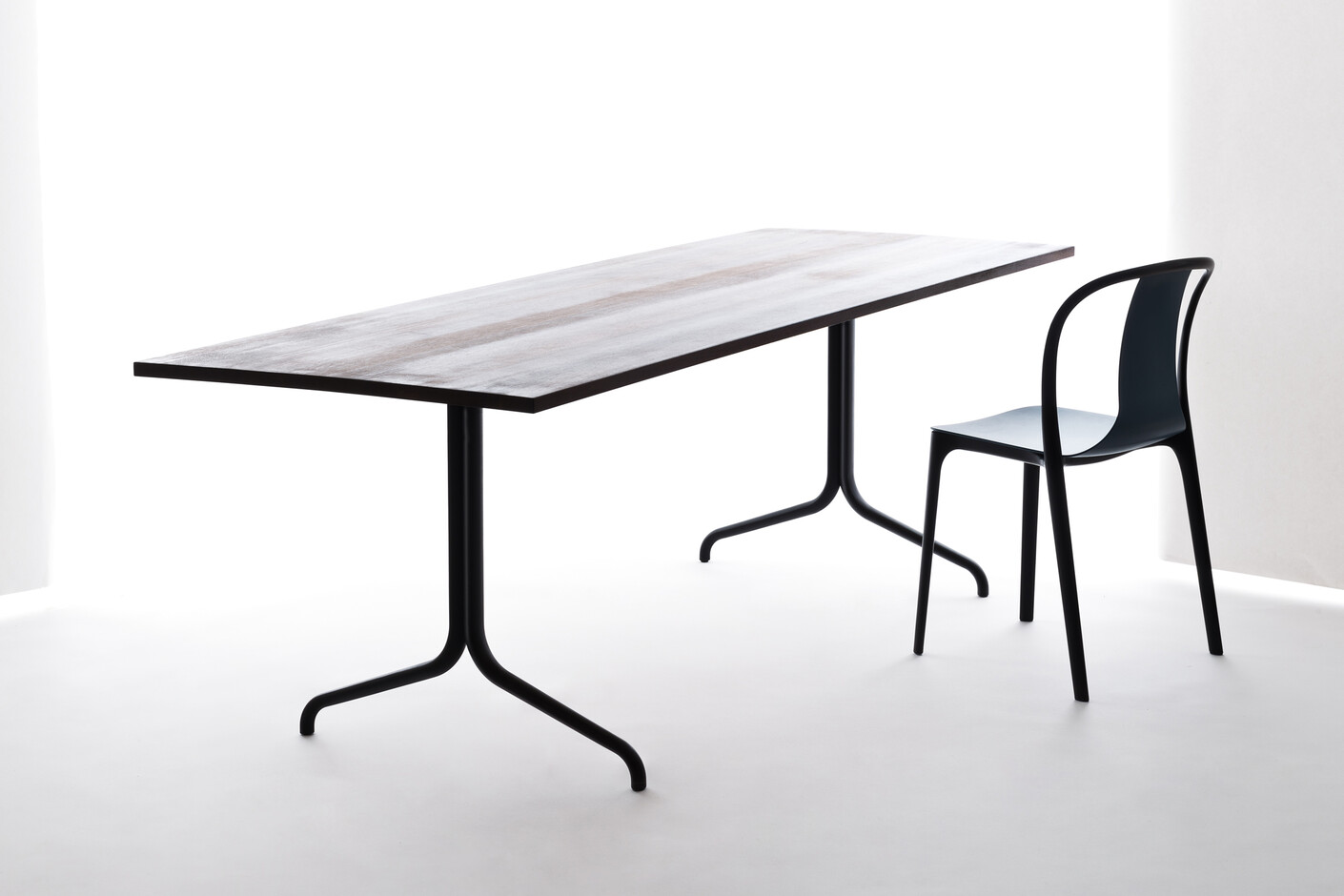SALONE DEL MOBILE 2018
The furniture whisperer
They are normally our silent servants: our items of furniture. They stand around, each object in its place, and wait patiently to be used. Now, with his exhibition “Typecasting. An Assembly of Iconic, Forgotten and New Vitra Characters,” Robert Stadler has given a voice to chairs, stools, cabinets and tables. And you know what? They really do have something to talk about! Indeed, some are veritable gossips. Last week in Milan at the Salone del Mobile, the Austrian designer and curator working on behalf of furniture maker Vitra had over 200 objects make an appearance in the La Pelota exhibition hall in Brera. They were not arranged according to their place of use and function as in stores or at fairs, but appeared as social beings with character, attitudes and quirky behavior, assembled in seven communities, and ready to talk.
For example, the wooden bureau by Ettore Sottsass calls to us: “Just look at all my compartments, ideal for tidily storing away all your belongings.” “Alcove Sofa” by Vitra whispers: “Do take a seat and lean back. You can talk in peace here.” The tone adopted by Konstantin Grcic’s “Stool-Tool” is quite different. The chair/table hybrid hisses: “Now don’t go getting comfy on me. There’s a lot still to be done!” And the pale-pink sofa with the unusual curves by Isamu Noguchi utters enticingly: “Look at me! I’m much too beautiful to simply pass by. Take a seat.” And the furniture items also have plenty to say to each other. “Alu Chair” flirts with a crazy eight-legged chair by Gaetano Pesce – who would have thought the respectable Pesce, everybody’s darling, would do such a thing? Despite the decades that divide them, Verner Panton’s “Living Tower” waves to Makkink & Bey’s “Social Sculpture,” reminiscent of a cat’s scratch post, while “Landi Chair” turns a cold aluminum shoulder to “Marshmallow Sofa.”
“I wanted to emphasize the social aspect of furniture,” explains Robert Stadler as we talk at the exhibition. “That’s why I present the pieces as personalities.” He borrowed the idea of “Typecasting” included in the exhibition title from the film and theatre industry, which casts actors according to certain stereotypes, say, as villains or young beauties. Similarly, in the exhibition there are the “Beauty Contestants,” which with their attractive and often organic appearance curry our favor in the same way as models in a beauty contest. Naturally, the “Spartans" have no need of such things: Minimalists like Maarten van Severen’s lounge chair or Jasper Morrison’s plywood chair are interesting enough in their own right. Comfort? What fawning! Also attractive are the more-or-less fitting couplings in the section “Dating Site Encounters” – the term used for the sometimes disconcerting, real online dating meetings. For the exhibition, Stadler was able to select objects from Vitra’s current catalog as well as from the company archives and the Vitra Design Museum holdings. And he included everything from the mass-produced chair to the prototype. “My aim was to show a panorama: Vitra past, present and future. This strong way of producing and collecting furniture that characterizes Vitra,” says the curator. The historical perspective becomes especially evident in the main group, the “Communals.” These are objects intended to bring us together for conversation or work. It sounds highly contemporary, and it is, as Stadler himself and fellow designers like the Bouroullecs, Barber Osgerby or Grcic demonstrate with furniture studies conceived especially for the exhibition. For example, Stadler designed an upholstered platform with four swiveling and reclining backrests. “Hybrid” would fit perfectly in the open space of a start-up, where employees sometimes team up with colleagues, and other times work on their own. And the curator reminds us that such ideas are by no means a new trend by including older exhibits such as Panton’s 1960s icon “Tower,” or the brilliant combined pull-out table and bench “Tabula Rasa” by Ginbande from the 1980s. How much do you suppose we might still learn if we listened to our furniture more often?







































































































































































































































































